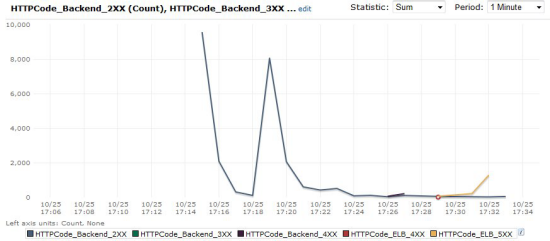AWS News Blog
Elastic Load Balancing: More IPv6 Support, More Metrics, More IP Addresses
We have made some improvements to our Elastic Load Balancing product:
- IPv6 is now supported in the Asia Pacific (Singapore) and Asia Pacific (Tokyo) regions.
- Each Elastic Load Balancer reports six new metrics to Amazon CloudWatch.
- The DNS entry associated with an Elastic Load Balancer can now return up to eight IP addresses.
IPv6 Support
Earlier this year I announced our support for IPv6 in our US East (Northern Virginia) and EU (Ireland) regions. We are now supporting IPv6 in our Asia Pacific (Singapore) and Asia Pacific (Tokyo) regions. Read my original post to learn more about this much-requested feature.
More Metrics
Each Elastic Load Balancer now reports six new metrics to CloudWatch. Two of the metrics provide information about the load balancer; the other four provide information about the instances that are attached to it. These metrics provide you with additional information about the HTTP status codes returned by the load balancer and by the EC2 instances behind it.
The new load balancer metrics report on the number of HTTP 4xx (client error) and 5xx (server error) responses generated within and returned by the load balancer. The metrics are named HTTPCode_ELB_4XX and HTTPCode_ELB_5XX. These metrics were not previously available from the instance logs or through other AWS APIs.
The new instance metrics report on the number of HTTP 2xx (success), 3xx (redirection), 4xx (client error), and 5xx (server error) responses returned by the EC2 instances behind the load balancer. These metrics do not include the responses that were counted in the load balancer metrics described in the previous paragraph.
You can view these metrics in the AWS Management Console. Here’s a sample:

Additional IP Addresses
A DNS lookup on the DNS name of an Elastic Load Balancer will now return up to eight IP addresses, depending on the current capacity of the load balancer and the number of Availability Zones supported by the load balancer. By providing these additional addresses, clients are able to retry their connection without re-resolving the DNS name. This change will apply to all new Elastic Load Balancers. It will be applied to existing Elastic Load Balancers over the nexte three weeks.
You can learn about all of these features in the Elastic Load Balancing Documentation.
— Jeff;